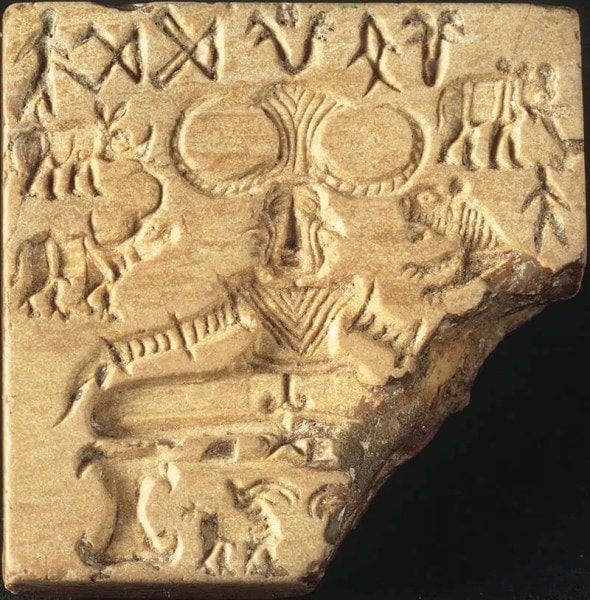UPSC Issue at a Glance | Why Tigers Matter: Environmental, cultural, and economic significance of India’s apex predator
What comes to mind when you picture a tiger? Bold black stripes with a tawny coloured body, a revered cultural symbol, or a majestic embodiment of power? A tiger is all this and so much more. As this elusive big cat commands influence far beyond its own existence, here’s all you need to know about it.
 Tiger numbers in India have exponentially increased.
Tiger numbers in India have exponentially increased. UPSC Issue at a Glance is an initiative of UPSC Essentials to focus your prelims and mains exam preparation on an issue that has been in the news. Every Thursday, cover a new topic in Q&A format. This week’s issue is focused on the Tigers. Let’s get started!
What is the issue?
A poaching network marked by an unusual coalition of groups from tribal communities in central India, using digital payments with “hawala funds” and separate supply lines to Nepal and Myanmar, has taken out “100 to any number” of tigers since 2022 from various parts of India, an investigation by The Indian Express has found.
Notably, Madhav National Park in Shivpuri district, Madhya Pradesh, was declared a tiger reserve earlier this month, taking the tally of such reserves in the country to 58. In this context, knowing about the environmental, cultural and economic significance of tiger and its conservation becomes crucial.
UPSC Syllabus:
Preliminary Examination: General issues on Environmental ecology, Bio-diversity and Climate Change – that do not require subject specialization.
Mains Examination: General Studies III: Conservation, environmental pollution and degradation, environmental impact assessment.
What will you learn from this article? |
|
Question 1: How do tigers function as an umbrella species and why is their conservation critical for biodiversity?
The tiger is not only our national animal but also a symbol of our ecosystem. As top predators and an ‘umbrella species’, tigers play a crucial role in maintaining the balance of the planet’s ecosystems. Tigers sit at the top of the ecological pyramid. They prey on other herbivores (plant eaters) such as deer. But without enough tigers to eat herbivores, they can overgraze and damage the land, disrupting the balance of the local environment.
| Facts about Tigers |
| 📍Scientific Name: Panthera tigris 📍Weight: 220–660 pounds 📍Length: 6–10 feet 📍Wildlife Protection Act (WPA), 1972 status: Schedule I. 📍IUCN Red List status: Endangered. 📍CITES status: Appendix I. 📍Habitats: Tropical rainforests, evergreen forests, temperate forests, mangrove swamps, grasslands, and savannas. 📍India’s Habitat: Shivalik-Gangetic plains, Central India and Eastern Ghats, Western Ghats, North Eastern Hills & Brahmaputra Flood Plains and Sundarbans. |
If tigers were to disappear, it would have a detrimental impact on the entire ecosystem, affecting our flora and fauna significantly. According to website of World Wildlife Fund,
As a large predator, the tiger plays a key role in maintaining healthy ecosystems. These ecosystems supply both nature and people with fresh water, food, and health. Securing tiger landscapes could help protect at least nine major watersheds, which regulate and provide freshwater for over 800 million people in Asia.
Tigers also play a crucial role in mitigating climate change. The landscapes inhabited by tigers store more carbon than any other forests worldwide. In fact, the protected forests within tiger reserves in Asia are the most effective carbon storage areas on the planet. Thus by conserving tigers, we are not just protecting a specific species; we are also safeguarding our endangered ecosystems.
Question 2: What is the significance of tigers in Indian culture?
From ancient folklore to scriptures, the tiger has been prominently featured throughout Indian history. The majestic animal is also symbolically embedded in the Indian subcontinent’s culture. Here are some examples that present the significance of tigers in Indian culture.
Tigers in Hindu Mythology
According to WWF-India’s website, “Tigers occupy an important place in Indian culture. For ages, they have been symbols of magnificence, power, beauty, and fierceness, often associated with bravery and valor. The tiger also holds a significant place in Hindu mythology as the vehicle of Goddess Durga.”
Tiger in Harappan Seals
Some Harappan seals feature a depiction of a tiger. One particular seal generally identified as the Pashupati Seal by some scholars depicts a human figure seated cross-legged. In this seal, to the right side of the seated figure, a tiger and an elephant are depicted, while on the left, a rhinoceros and a buffalo are seen. Additionally, two antelopes are shown below the seat. This seal provides insights into the religious beliefs of the Harappan civilisation.
 The Pashupati seal of Mohenjodaro
The Pashupati seal of Mohenjodaro
In one of the seals, we see the depiction of a man fighting with two tigers. The depiction of the tiger in these seals presents their symbolic importance.
 Mould of a seal showing a man fighting two tigers
Mould of a seal showing a man fighting two tigers
Tigers in Rock Paintings of Bhimbetka
Tigers are also depicted in the rock paintings of Bhimbetka. The Rock Shelters of Bhimbetka are located approximately 45 km southeast of Bhopal, along the road to Hoshangabad. This site features more than 700 rock shelters, with over 400 of them containing paintings. The rock paintings at Bhimbetka depict a deer, tiger, cattle, stylised peacocks and a hunter.
Pulikali
Pulikali (Tiger Dance) is one of Kerala’s indigenous art forms. On the fourth day of the Onam celebration, artists paint their bodies like tigers with yellow, red, and black stripes and dance to the rhythm of traditional percussion instruments including thakil, udukku, and chenda. The fundamental premise of this folk art is tiger hunting, with performers portraying both the tiger and the hunter. The dance is a reminder of Kerala’s profound connection and respect for forests — despite looking ‘wild’, there are careful rules when dressing up.
 Women and men during Pulikali. (Express photo by Syed)
Women and men during Pulikali. (Express photo by Syed)
Puli Vesham
Puli Vesham or Tiger Dance is performed in the Andhra region during Dussehra and Muharram festivals. It is a one-man dance where the performer wears a narrow strip of cloth around the waist, and has the whole body painted with stripes, sporting a long tail, dancing vigorously in tiger-like strides and jumps. The rhythm is provided by a Dappu or Mridangam.
The above-mentioned examples not only reflect the significance of the tiger in the culture and history of the Indian subcontinent but also emphasise the importance of conserving it for future generations.
Question 3: How does tiger conservation contribute to India’s economy?
Conserving tigers not only aids in ecosystem preservation but also offers financial benefits. Tiger reserves play a crucial role in supporting human life by protecting agricultural lands and fish nurseries, as well as providing clean drinking water and irrigation. These habitats are economically valuable for the surrounding communities.
Tiger reserves also attract ecotourism (popularly known as ‘tiger tourism) which contributes to the local economy and reduces the community’s reliance on unsustainable practices such as hunting and deforestation.
| Tiger tourism |
| According to the website of Ranthambore National Park, tiger tourism refers to the practice of visiting national parks and wildlife sanctuaries that are home to wild tigers, with the primary goal of observing and experiencing the majestic animal in its natural habitat. The main purpose of tiger tourism is to promote conservation efforts and raise awareness about the endangered status of tigers. |
According to the website of world wildlife, “Tigers can directly help some of the world’s poorest communities. Tourists go to some places where tigers exist, creating opportunities for communities with few alternatives to earn money. Tiger conservation projects also help provide alternative livelihoods for rural communities, helping to bring in income and generating employment opportunities.”
Furthermore, eco-tourism generates revenue that can support conservation initiatives, including anti-poaching patrols, habitat restoration, and the protection of forests and community-based conservation efforts.
Question 4: What is the status of Tiger Population in India?
India is home to an estimated 3,681 tigers (range 3167-3925), as per the last population estimation released in 2022-23. The big cats occupy around 89,000 sq km area, as per National Tiger Conservation Authority (NTCA). Tigers are broadly distributed across the following “landscapes” — Shivalik Hills and Gangetic Plains, Central Indian Highlands and Eastern Ghats, Western Ghats, North Eastern Hills and Brahmaputra floodplains, and the Sundarbans.
Corbett, with 260 tigers, boasts the largest population of the big cat followed by Bandipur (150), Nagarhole (141), Bandhavgarh (135), Dudhwa (135), Mudumalai (113), Kanha (105), Kaziranga (104), Sundarbans (100), Tadoba-Andhari (97), Sathyamangalam (85), and Pench (77).
Among states, Madhya Pradesh with 785 has the biggest tiger population, followed by 563 in Karnataka, 560 in Uttarakhand, and 444 in Maharashtra. Presently, there are 26 tiger reserves with a population of more than 50 tigers. In the remaining 27 reserves, there are concerns about the tiger density. In fact, there were some 16 reserves with either no tigers, or male-only populations, or fewer than five tigers, as per the 2022 report. These reserves were in Arunachal Pradesh, Chhattisgarh, Jharkhand, Maharashtra, Telangana, and Odisha.
Notably, poaching and illicit wildlife trade still presents substantial threats to the tiger populations. Recognising these challenges and the importance of tigers in India’s ecological and cultural context, the government has taken several tiger conservation initiatives.
Question 5: What are the key initiatives taken by the Government for tiger conservation?
Dheeraj Pandey (Chief Conservator of Forest, Kumaon) writes in ‘Revival of the tiger: A joint effort, a cultural renaissance’-“In India, the tiger is a significant part of religious and mythological iconography. It also has a historic significance, mythopoetically woven into the stories of and by the hunter-turned-conservationist Jim Corbett. That is why the tiger’s near-extinction in 1973 was a pivotal moment in the conservation history of India. The revival of the tiger since then has also meant a cultural renaissance and revival of our conservation ethics and values.” Some of the key initiatives of government of India for Tiger conservation are:
Project Tiger
The ‘Project Tiger’ is a Centrally Sponsored Scheme (CSS) launched by the Central government on April 1, 1973, in a bid to promote conservation of the tiger. The programme came at a time when India’s tiger population was rapidly dwindling.
To tackle the problem of hunting and poaching of not just tigers but also other animals and birds, then Prime Minister Indira Gandhi promulgated the Wildlife Protection Act in 1972. A year later, after a task force urged the government to create a chain of reserves dedicated to tiger preservation, Indira unveiled Project Tiger.
| How Tiger stripes are unique? |
| Similar to human fingerprints, each tiger’s stripe pattern is unique. Individual tigers can be identified by their distinct stripes, which are documented using camera trap images. This method helps estimate population numbers, whether within a protected area or on a larger scale for an entire country. |
Launched at the Jim Corbett National Park, the programme was initially started in nine tiger reserves of different States such as Assam, Bihar, Karnataka, Madhya Pradesh, Maharashtra, Odisha, Rajasthan, Uttar Pradesh and West Bengal, covering over 14,000 sq km.
Project Tiger didn’t just focus on the conservation of the big cats. It also ensured the preservation of their natural habitat as tigers are at the top of the food chain.
National Tiger Conservation Authority (NTCA)
The NTCA is a statutory body under the Ministry of Environment, Forests and Climate Change constituted under enabling provisions of the Wildlife (Protection) Act, 1972, for strengthening tiger conservation, as per powers and functions assigned to it under the said Act. The NTCA conducts the All India Tiger Estimation to track the big cat numbers, usually in cycles of four years.
MSTrIPES
The “M-STrIPES” (Monitoring System for Tigers: Intensive Protection and Ecological Status) is a platform where modern technology is used to assist effective patrolling, assess ecological status and mitigate human-wildlife conflict in and around tiger reserves.
On global level, India has been actively collaborating with neighbouring countries to enhance transboundary conservation efforts like India-Bangladesh to promote tiger conservation across the Sundarbans landscape.
| Global Tiger Day |
| Founded in 2010, July 29th is celebrated as the Global Tiger Day to raise awareness about this magnificent yet endangered big cat. |
International Big Cats Alliance (IBCA) was launched by the Indian Prime Minister, Narendra Modi, in 2023 to promote the protection of seven big cats: the tiger, leopard, snow leopard, lion, cheetah, puma and jaguar during a program honouring 50 years of Project Tiger. The alliance seeks to establish contact with a spectrum of countries that surround these large cats’ native habitats.
Although government initiatives like Project Tiger have made significant progress, still as the custodian of the largest number of tigers, India needs to adopt a balanced approach that includes government action, community involvement, and global cooperation, which is crucial for ensuring the survival of tigers in the country.
Post Read Questions
Prelims
(1) Among the following Tiger Reserves, which one has the largest area under “Critical Tiger Habitat”? (UPSC CSE 2020)
(a) Corbett
(b) Ranthambore
(c) Nagarjunasagar-Srisailam
(d) Sundarbans
(2) The term ‘M-STrIPES’ is sometimes seen in the news in the context of (UPSC CSE 2017)
(a) Captive breeding of Wild Fauna
(b) Maintenance of Tiger Reserves
(c) Indigenous Satellite Navigation System
(d) Security of National Highways
(3) Consider the following pairs: (UPSC CSE 2014)
1. Dampa Tiger Reserve : Mizoram
2. Gumti Wildlife Sanctuary : Sikkim
3. Saramati Peak : Nagaland
Which of the above pairs is/are correctly matched?
(a) 1 only
(b) 2 and 3 only
(c) 1 and 3 only
(d) 1, 2 and 3
(4) With reference to the Pulikali dance, consider the following statements:
1. It is a form of tiger dance.
2. It is held during the Onam festival.
Which of the statement(s) given above is/are correct?
(a) 1 only
(b) 2 only
(c) Both 1 and 2
(d) Neither 1 nor 2
Mains
How are tiger reserves notified? Discuss the significance of forming a new tiger reserve in the context of India’s tiger conservation efforts. Highlight the ecological and socio-economic benefits that such initiatives bring to local communities.
| Prelims Answer Key |
| 1. (c) 2. (b) 3. (c) 4. (c) |

(Sources: worldwildlife.org, ranthamborenationalpark.com, asi.nic.in, utsav.gov.in, India’s 58th tiger reserve, 3 yrs, 100 tigers killed & counting: new-age poaching mafia taps tech, digital payments, hawala networks, Fifty years of ‘Project Tiger’, One more tiger reserve: why India needs them, the challenges some face, Save the tiger, save the forests, 5 lesser-known folk dance forms of India)
For your queries and suggestions write at roshni.yadav@indianexpress.com
🚨 Click Here to read the UPSC Essentials magazine for March 2025. Share your views and suggestions in the comment box or at manas.srivastava@indianexpress.com🚨
Subscribe to our UPSC newsletter and stay updated with the news cues from the past week.
Stay updated with the latest UPSC articles by joining our Telegram channel – Indian Express UPSC Hub, and follow us on Instagram and X.
Must Read
Buzzing Now



Mar 30: Latest News
- 01
- 02
- 03
- 04
- 05
























